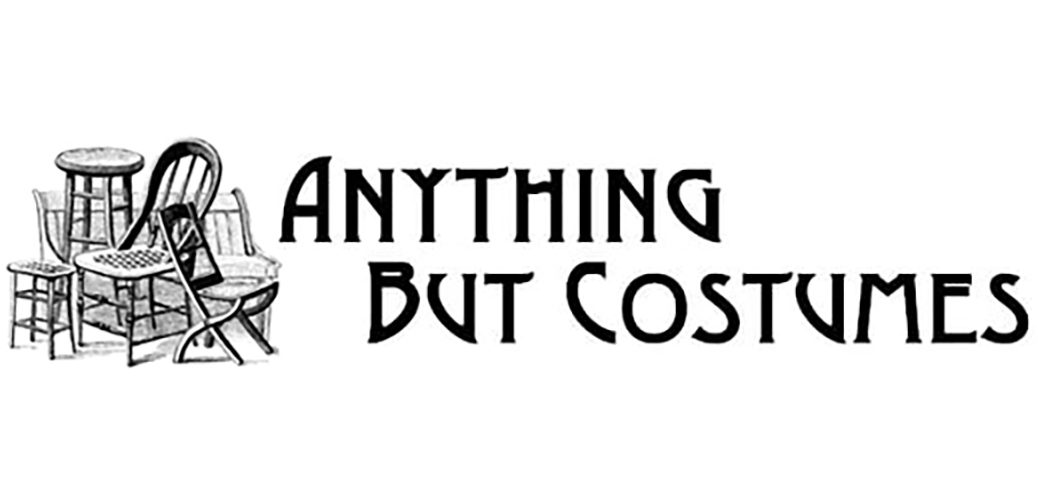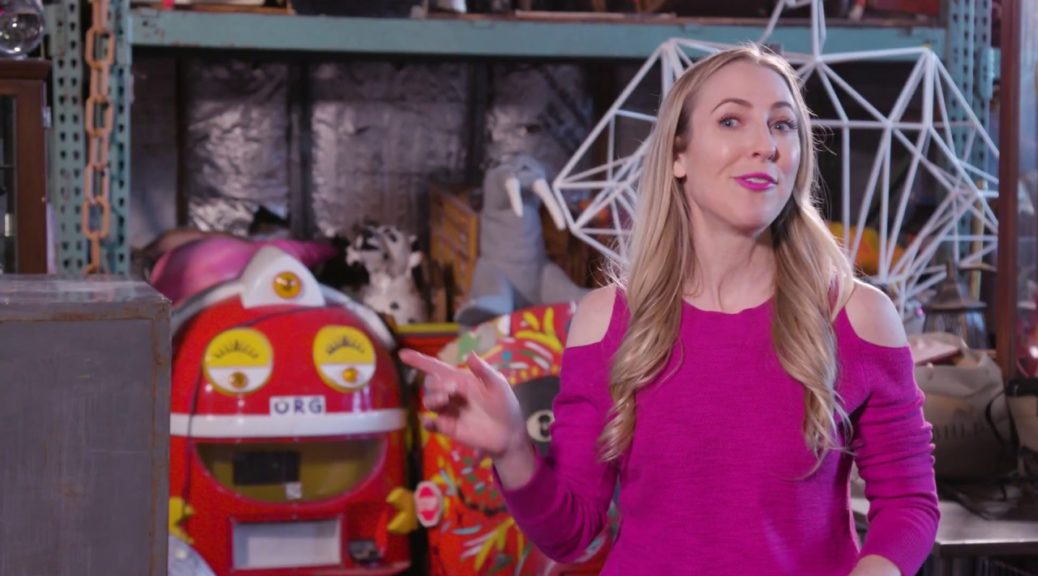The following comes from a 1957 article about a prop rental company founded to fulfill non-theatrical needs for props:
by Anthony Bailey and Brendan Gill
One of the most agreeable aspects of the boom we’ve been having for the past ten years or so is the freedom it offers young people in choosing their careers. If a young man doesn’t like the first job that presents itself, he abandons it in favor of a second, and if it, too, proves unsatisfactory, he’s apt to go out and invent a job of his own and make good in that. Take the case of a new acquaintance of ours, a pleasant and enterprising fellow named Stanley Levine, who is the deviser and proprietor of something called Prop Service. The name tells precisely what Mr. Levine has set out to do, which is to procure all sorts of props for the remarkably large number of non-Broadway people in this prop-happy city who require such objects—professional photographers, advertising agencies, TV producers, and the like. Levine, an athletic-looking thirty-two-year-old, is full of drive and bounce, as a seeker of props must be; his only assistants are his wife, known to the trade as Rhoda Roth (her maiden name) a man Friday named William Sheraton, and a telephone-answering service; and his headquarters is a room on Sutton Place, shared by Mary Suzuki, a nisei lady who does illustrations for fashion magazines.
When we visited Mr. Levine in Sutton Place the other day, we expected to find the room crammed to the ceiling with odd and perhaps unrecognizable objects. We found, on the contrary, that its contents consisted of a desk, a couple of chairs, two telephones, a small wooden box labelled “Source,” and a drawing board. “We had to make up our minds at the start whether to buy props,” Levine told us. “We decided against it, partly because many photographers don’t like to use a prop that they know other photographers have used, and partly because we’d have needed a warehouse to store stuff in. We’ve often been tempted to break our rule, but so far we’ve always either rented a prop or borrowed it or made it.” What was Levine’s preparation for his singular career? Brooklyn College, the Marines, the Sorbonne, then jobs with the United Nations, the Journal-American, Warner-Pathé, and a public-relations firm. “After a while, it occurred to me I didn’t like working for other people,” he said. “Rhoda and I are incorrigible window-shoppers, and we know a good deal about antiques. We figured we’d put our interest to work for us by charging a fee to locate the objects that we assumed photographers and the like were constantly in need of. We hung out our shingle in December, 1955, and discovered at once, to our astonishment, that what photographers wanted weren’t just antiques but also kitchen sinks.”
We supposed that Mr. Levine had mentioned kitchen sinks as a symbol, but he assured us he hadn’t. “You wouldn’t believe how many pictures of kitchen sinks get taken in this city every year, and how hard it is to find exactly the right sizes, shapes, and colors,” he said. “This is a frantic business. Rhoda and I work as much as twenty hours a day, six and a half days a week. We had no predecessors, we have no real competitors, and I doubt if we’ll have any successors.” He smiled the rueful smile of the pioneer who fears he may have made too good for his own good. “In the beginning, photographers came to us for props. Nowadays, advertising agencies often come to us for props before they’ve chosen a photographer. Sometimes, in fact, we choose the photographer for them. Agencies also like to consult us on what a given picture may cost. Why try and build an ad around a picture of a diesel yacht if it would take their whole budget just to hire the yacht? They don’t know what a yacht costs; we do. One agency wanted a life-size stuffed elephant for a prop. A stuffed elephant sounds cheaper than a live one, doesn’t it? Well, we found what they wanted up in Yonkers, but the price was so high that we persuaded them to go to the Zoo instead.”
Municipal departments and big corporations are extremely obliging about lending props, Mr. Levine said. He has often borrowed blinking lights, manhole guardrails and covers, pneumatic drills, and other equipment from Con Ed, and has borrowed subway seats, street signs, and similar items of local color from the city. “Except for an occasional gratuity, no cash changes hands in such cases, but there’s a prodigious amount of red tape to be got through,” Levine said. “That’s what we get paid for—our headaches. Our fees range from fifteen to a thousand dollars. Some agencies and photographers simply mail us a list of objects they need, and count on us to deliver them at the proper time and place.” Levine took a letter from the desk and read aloud, “‘One gilt pedestal. Feathered angel’s wings. One hookah. One ornate fibre screen. One old conga drum. One sea diver’s outfit. One beehive. One live tiger. One mermaid’s tail.’ We then scoot around town in a fire-engine-red Isetta 300 and look for things.” The props that the Levines are proudest of procuring are a ship’s gang-plank, a baseball grandstand, three racing greyhounds, and an eggshell cracked just so. “To date, our only failure has been a particular kind of Aladdin’s lamp that somebody wanted—a million-to-one shot,” Levine said. “Except for that, we’ve never missed a deadline, and we’ve never turned down an assignment.” A telephone rang, and he picked it up. “Palm trees?” he asked. “Why not? Where?… What time?… How many?”
Bailey, Anthony, and Brendan Gill. “Props.â€Â The New Yorker, 8 June 1957, p. 24.


